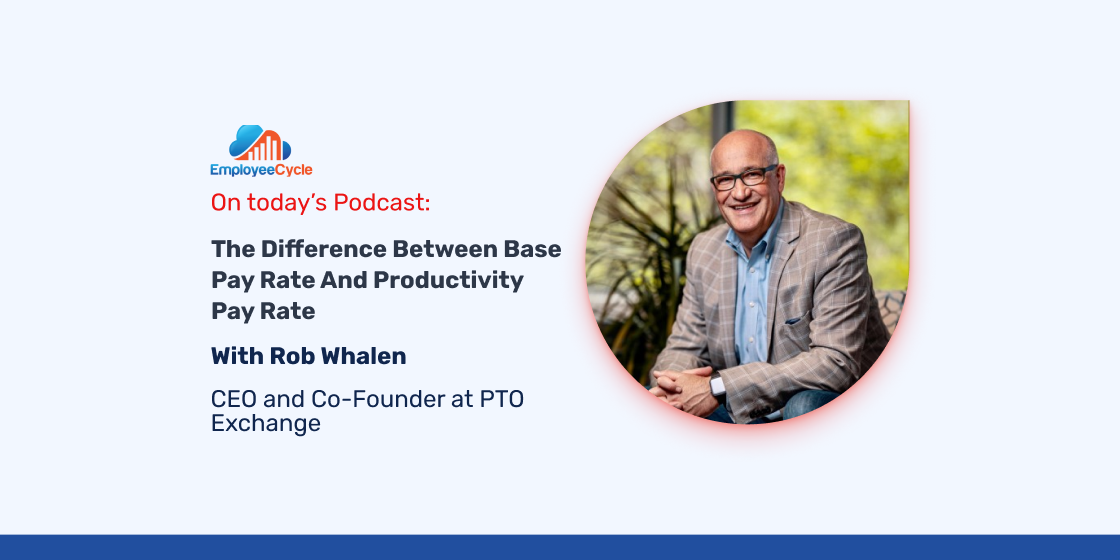On this episode of the Employee Cycle podcast, we have Rob Whalen, CEO, and Co-Founder at PTO Exchange joining us to discuss the difference between base pay rate and productivity pay rate, and how unlimited PTO is not in the best interests of employees in the long run.
What you’ll learn from this episode:
- First off, how did Rob Whalen end up working in the wonderful HR world?
- Secondly, “unlimited PTO” sounds good, but it backfires – why?
- Next, what are the definitions of base pay rate and productivity pay rate?
- What are the benefits of employees being able to exchange earned PTO for other items of value?
- How does this new way of monitoring PTO really change the problem of employees not taking time off?
- Giving employees “unlimited” anything is a misnomer. HR has a fiduciary responsibility to employees to track and accrue PTO as an expense.
How to find Rob Whalen and PTO Exchange:
- Click here for Rob Whalen – LinkedIn
- Click here for PTO Exchange- LinkedIn
- Click here for PTO Exchange – Website
PTO Exchange:
According to research, some 768 million days of paid time off went unused in 2018. This happens for a variety of reasons, and for the vast majority of employees, these unused days accrue and are available for use sometime in the future. PTO is, after all, part of employee compensation. But it doesn’t always work out that way. Most companies have accrual caps – so when an employee reaches this limit, he or she stops accruing and adding to their PTO account. This “forfeited” PTO represented over $65 billion in value in 2018. This is a form of compensation, earned by employees. But it is nearly impossible for employees to convert this PTO into other valuable assets or currency.
Until now. PTO Exchange allows employees to translate PTO into other things of value, like retirement accounts, loan repayment programs, travel awards, and charitable causes.
Music credits:
About Employee Cycle:
Employee Cycle is changing the way HR leaders use data! We change their disconnected employee data into a user-friendly, centralized, and real-time HR Analytics Dashboard. We help companies view, track, and analyze their workforce data in one place. As a result, companies avoid risks, save costs, and increase their employees’ lifetime value.












